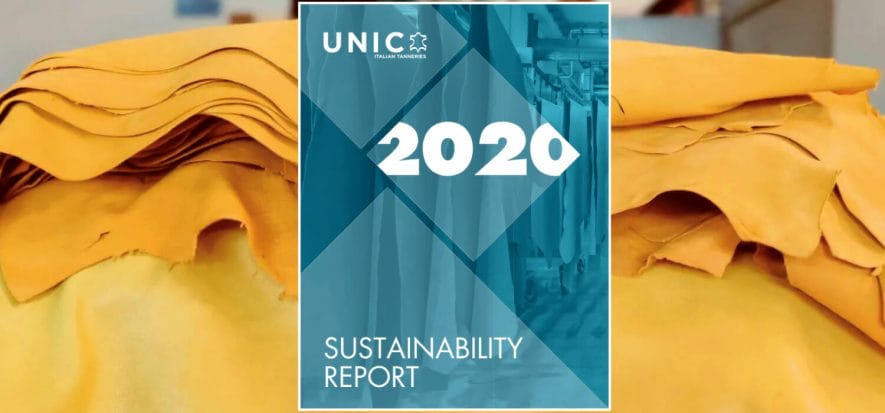By registry, this is the edition that gets it to legal age. UNIC – Italian Tanneries presented to the public yesterday (digitally), the new Sustainability Report of the national tanning industry. The document has been crafted and published for 18 years now and is, in this version, also available for download. All the sustainable practices of Italian leather can be read by clicking here.
All the sustainability of Italian leather
“For 18 years – writes UNIC -, Italy’s tanning segment has shared the achieved results in the field of sustainability with its stakeholders”. As well as “the initiatives put in place to monitor and reduce the environmental impacts of both process and products, the activities focused on supporting and giving value to the workers and the nearby communities, and the projects that guarantee the ethical compliance of the chain’s dynamics”. The 2020 edition uses the same settings as the one before and builds “around” the Sustainability Development Goals of the UN 2030, and it updates them on the basis of the European Green Deal, which focuses on decarbonizing the EU by 2050. In order to do so, the tanning segment sets itself up as an example of circular economy: one that manufactures durable and reusable materials.
Some results
As far as social sustainability goes, the report shows the segment has a quota of female workers equal to 21.5%, and a stable rate of on-the-job injuries on yearly base, with 25% of those taking place while travelling to and from work. While with regards to environmental performances, UNIC’s data shows continuity from the previous year. For example, production of waste per square meter of leather went from 1.75 kilograms of 2019 to 1.65 kg for 2020. 74.4% of the waste, in any case, will be reutilized.
Collaborations and animal welfare
The Sustainability Report 2020 also tells the story of UNIC’s initiatives (the association is also part of Confindustria Moda), all finalized on developing tools that make the chain traceable and safe. For example, the Traceability of Sustainable Value Chains project, developed in collaboration with UNECE (UN economic cooperation) and ITC. But also, the DCF Leather project, which involves the reference certification entity ICEC, along with other international partners. Objective: guaranteeing the origin of leather from areas that aren’t being deforested. After Brazil, 3 other areas of interest for the segment have become the focus of the initiative. Meanwhile, this year, the collaboration between UNIC and the Veterinary Department of the University of Milan has ended. The joint project’s goal was to “map legislations regarding animal welfare within the main countries for the sourcing of material for the leather segment in Italy”.
Read also:










